41 nutritional value on food labels
The Science Behind Calories and Nutrition Facts Labels The calorie number we see on food labels refers to a kilocalorie (kcal), which is also known as a large calorie or a food calorie. A kilocalorie is 1 000 calories. One kilocalorie is the amount of energy it takes to heat one kilogram of water one degree Celsius at sea level. Nutritional Values For Common Foods And Products Nutritional facts database with detailed analysis, advanced search and tools.
Calories on the New Nutrition Facts Label | FDA For example, if you ate one serving of the food shown on the label below, you would be eating 220 calories. And two servings would be 440 calories. The terms "fat-free" and "no added sugars" do not...
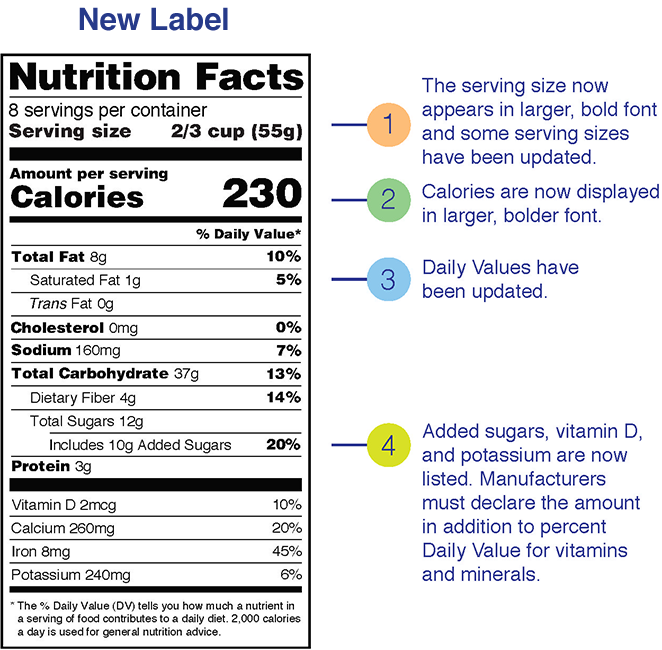
Nutritional value on food labels
Food Labels | CDC - Centers for Disease Control and Prevention If you eat the whole thing, you are eating 8 times the amount of calories, carbs, fat, etc., shown on the label. Total Carbohydrate shows you types of carbs in the food, including sugar and fiber. Choose foods with more fiber, vitamins, and minerals. Choose foods with lower calories, saturated fat, sodium, and added sugars. Avoid trans fat. Nutrient Claims on Food Labels - Clemson University A food that provides 10% or more of the Daily Value for a nutrient per serving is a good source, while a food providing 20% is considered "high in" the nutrient. Choose several servings of foods that are "high in" or "good sources" of hard-to-get nutrients like calcium. Recommended amounts are the minimums you should consume daily. How accurate are nutrition labels? According to the FDA, nutrition labels can be up to 20% erroneous when it comes to calorie counts. Although this can be aggravating, experts say it is unlikely to derail an otherwise healthy diet. To prevent unexpected calories in processed foods, sticking to whole, unprocessed foods can be a good solution. How often are nutrition labels wrong
Nutritional value on food labels. The Basics of the Nutrition Facts Label - Academy of Nutrition and ... Aim high in vitamins, minerals and dietary fiber. Low calorie: 40 calories or less per serving. Low cholesterol: 20 milligrams or less and 2 grams or less of saturated fat per serving. Reduced: At least 25% less of the specified nutrient or calories than the usual product. Good source of: Provides at least 10 to 19% of the Daily Value of a ... Understanding Ingredients on Food Labels - American Heart Association Understanding Ingredients on Food Labels. Food labels are an important source of information about calories and the nutritional value of the foods you eat, a crucial tool in building a heart-healthy diet. The Nutrition Facts information is always displayed in the same orderly fashion and helps you understand how much of certain nutrients that ... Understanding Food Labels | The Nutrition Source | Harvard T.H. Chan ... The percent Daily Value (%DV) shows how much of a nutrient in one serving of food contributes to one's approximate daily requirement for the nutrient. To best use the %DV, remember these simple guidelines: 5% DV or less of a nutrient per serving is considered low. Food Labels | Nutrition.gov Food labels can help you make healthy choices when buying food in grocery stores or restaurants. Labeling Organic Products. USDA, Agricultural Marketing Service, National Organic Program. Learn about organic foods, requirements, and how they are labeled. Calories on the Menu. HHS, ...
Food Label FAQ: Using the Nutrition Facts Panel - WebMD This shows you the percentage of nutrients in the food, based on getting 2,000 calories a day and the daily requirement for it. To make the best choices: Choose foods with 5% to 10% Daily Value or ... What Is the Meaning of Nutritional Value? | livestrong Almost every food item has a nutrition facts label. When shopping, it's important to know what each nutrient means in the grand scheme of overall health. ... Just remember that when reading nutrition facts labels, food items with 400 or more calories is considered high and the serving size isn't always the full package, so do the math before ... Why food labels showing the exercise needed to burn off calories won't ... This could mean that general food labels could be deceptive. It's unlikely that the calories estimated to be burnt on the packet will apply to everyone. This could lead to some people eating ... Looking at labels - British Nutrition Foundation The laws around nutrition labelling in the UK outline what information must be provided to you, as a consumer, when buying food, and how that information ...
Understanding Food Nutrition Labels | American Heart Association When the Nutrition Facts label says a food contains "0 g" of trans fat, but includes "partially hydrogenated oil" in the ingredient list, it means the food contains some trans fat, but less than 0.5 grams per serving. So, if you eat more than one serving, you could end up eating too much trans fat. How to Read Everything on the Nutrition Facts Label - Food Network The point is food companies know that 200 calories will look way more appealing to a shopper than 800 calories. Once again, it's companies trying to lure you in. This carries over to all the ... How to Determine the Nutritional Value of Food - FoodCrumbles Micronutrients. Keep in mind: foods are variable. Determining the nutrient content in three ways. 1) Analyze the contents in a lab. 2) Used published values from literature. 3) Calculate your nutritional value. Determining energy content is a simple calculation. Set conversion values. Calculation example. How Do They Calculate Calories on Food Labels? 22 grams of carbohydrate (22 x 4 = 88 calories) 2 grams of protein (2 x 4 = 8) ...should contain approximately 140 calories. It's important to recognize that 4-9-4 is an average, and not an exact amount. For example, 1 gram of fat in one food may yield 8.34 calories while 1 gram of fat from another food yields 9.7 calories.
Food labels & nutritional information | Raising Children Network Nutritional information panels on food labels list energy, protein, fat, carbohydrates and sodium. Nutritional information panels are a better guide to nutritional value than advertising or packaging. If a product contains ingredients that commonly cause food allergic reactions, the food label must say so.
How to Understand and Use the Nutrition Facts Label | FDA Dietary fiber, vitamin D, calcium, iron ad potassium are nutrients on the label that Americans generally do not get the recommended amount of. They are identified as nutrients to get more of....
Understanding Nutrition Facts on Food Labels - WebMD The label tells you it has no fiber or any of the key nutrients: vitamins A or C, iron and calcium. You'll notice different units of measurement on food labels. Many of the nutrients are measured...
Food Labels 101 - Penn Medicine A sodium level of 140 mg or less on the nutrition facts label is considered low sodium. This is an essential number to look for when reading the label. Total Carbohydrates - Fiber and Sugar Foods high in fiber can be beneficial to a healthy diet, as fiber helps manage blood sugar levels and can lower cholesterol.
How To Read Food and Beverage Labels - National Institute on Aging Or you can call the U.S. Department of Agriculture's Food and Nutrition Information Center at 301-504-5414. Understanding percent Daily Value (% DV) The percent Daily Value (% DV) tells how much a nutrient in a serving of the food or beverage contributes to a total daily 2,000-calorie diet.
Food Labeling & Nutrition | FDA Food labeling is required for most prepared foods, such as breads, cereals, canned and frozen foods, snacks, desserts, drinks, etc. Nutrition labeling for raw produce (fruits and vegetables) and...
The New Nutrition Facts Label | FDA En Español (Spanish) The U.S. Food and Drug Administration (FDA) has updated the Nutrition Facts label on packaged foods and drinks. FDA is requiring changes to the Nutrition Facts label based on...
My Food Product: Do I Need Nutrition Facts On My Labels? - ReciPal This is the number one rule that requires nutrition fact labeling. If any exemptions are met, your food still has to include nutrition facts if the label has any nutrient claims. Small businesses (your own or any that sell your product) that have more than $50,000 of food sales AND more than $500,000 of total sales.
Nutrition labelling - Language selection | Food Safety May 20, 2020 ... All the information must be expressed per 100g or per 100ml. It may also, in addition, be expressed per portion or per consumption unit of the ...
Learn How the Nutrition Facts Label Can Help You Improve Your Health Nutrients Required on Label Vitamin D and potassium values are required. Calcium and iron will continue to be required. Vitamins A and C will no longer be required but can be included on a voluntary basis. Slight Decrease in Sodium Allowance The daily limit for sodium decreased slightly from 2,400 mg per day to 2,300 mg per day.
Food labels - NHS Nutrition labels are often displayed as a panel or grid on the back or side of packaging. This type of label includes information on energy (kJ/kcal), fat, saturates (saturated fat), carbohydrate, sugars, protein and salt. It may also provide additional information on certain nutrients, such as fibre.
Nutrition labelling - Food Standards Agency Jan 29, 2018 ... energy value; amounts of fat, saturates, carbohydrate, sugars, protein and salt. The content of the mandatory nutrition declaration can be ...
Daily Value on the New Nutrition and Supplement Facts Labels The Nutrition Facts label must list total fat, saturated fat, trans fat, cholesterol, sodium, total carbohydrate, dietary fiber, total sugars, added sugars, protein, and certain vitamins and...
Food Labels: Fat & Cholesterol | Home & Garden Information Center The 2015 Dietary Guidelines for Americans recommends the following intakes of fat and cholesterol every day: total fat—20 to 35% of calories, depending on age and gender (65 grams for the 2,000-calorie intake level used in the Daily Value)*. saturated fat—less than 10% of calories**. trans fat— keep as low as possible.
How to Read Food Labels Without Being Tricked - Healthline Nutrition labels state how many calories and nutrients are in a standard amount of the product — often a suggested single serving. However, these serving sizes are frequently much smaller than what...
How accurate are nutrition labels? According to the FDA, nutrition labels can be up to 20% erroneous when it comes to calorie counts. Although this can be aggravating, experts say it is unlikely to derail an otherwise healthy diet. To prevent unexpected calories in processed foods, sticking to whole, unprocessed foods can be a good solution. How often are nutrition labels wrong
Nutrient Claims on Food Labels - Clemson University A food that provides 10% or more of the Daily Value for a nutrient per serving is a good source, while a food providing 20% is considered "high in" the nutrient. Choose several servings of foods that are "high in" or "good sources" of hard-to-get nutrients like calcium. Recommended amounts are the minimums you should consume daily.
Food Labels | CDC - Centers for Disease Control and Prevention If you eat the whole thing, you are eating 8 times the amount of calories, carbs, fat, etc., shown on the label. Total Carbohydrate shows you types of carbs in the food, including sugar and fiber. Choose foods with more fiber, vitamins, and minerals. Choose foods with lower calories, saturated fat, sodium, and added sugars. Avoid trans fat.


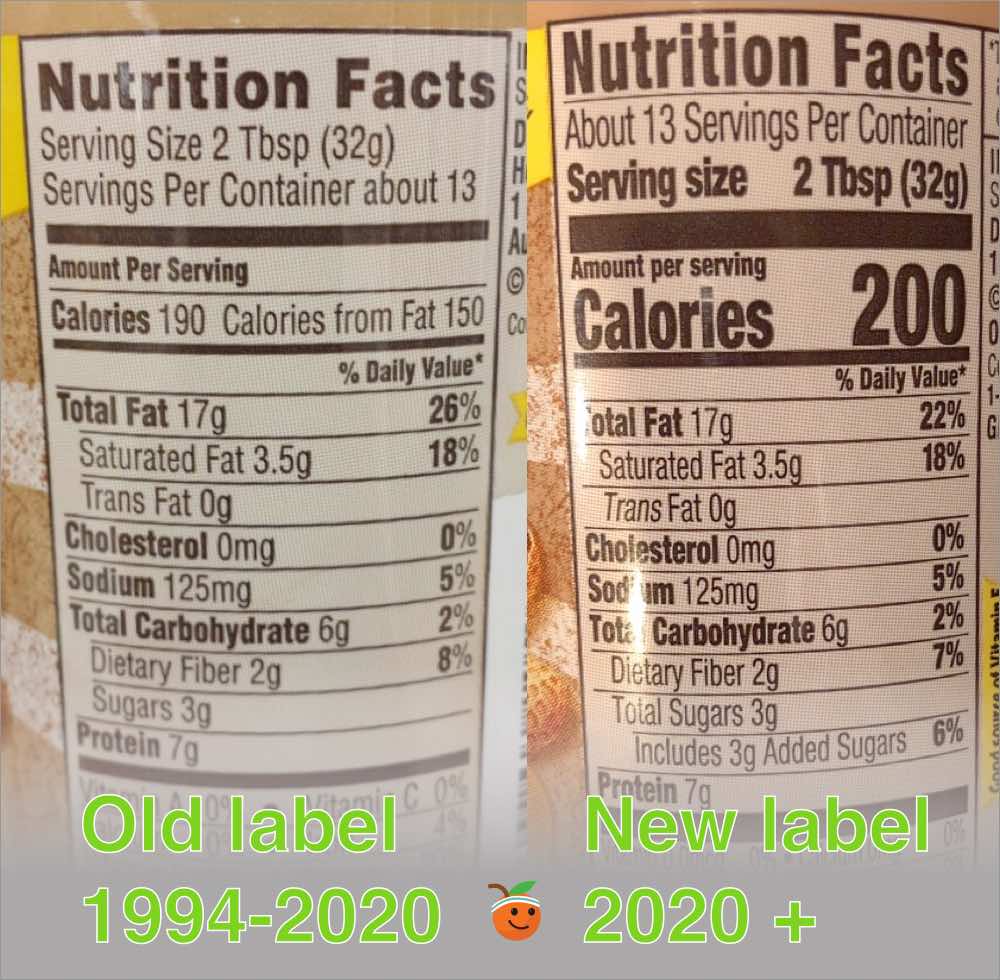
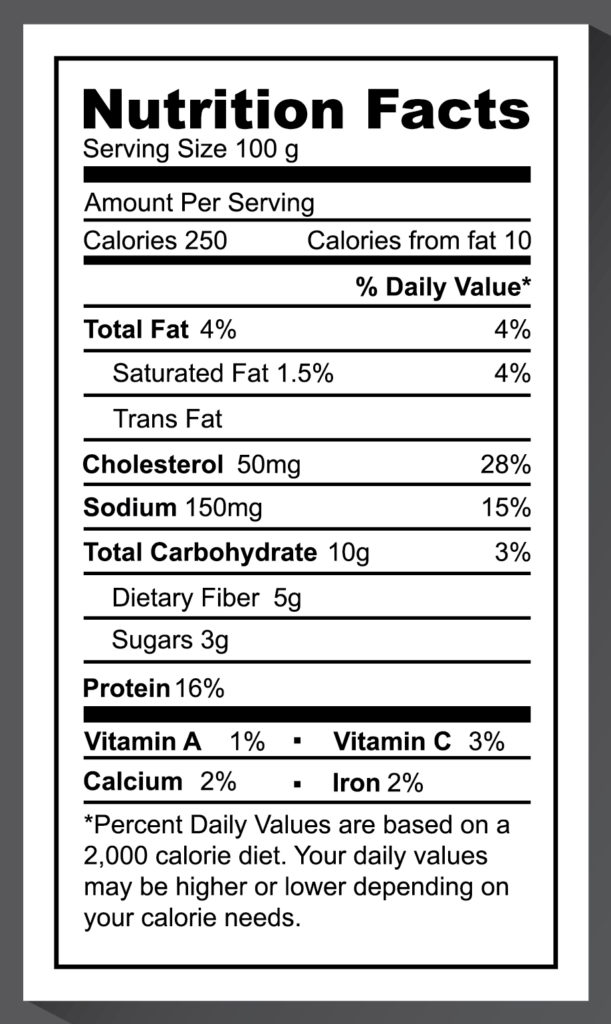
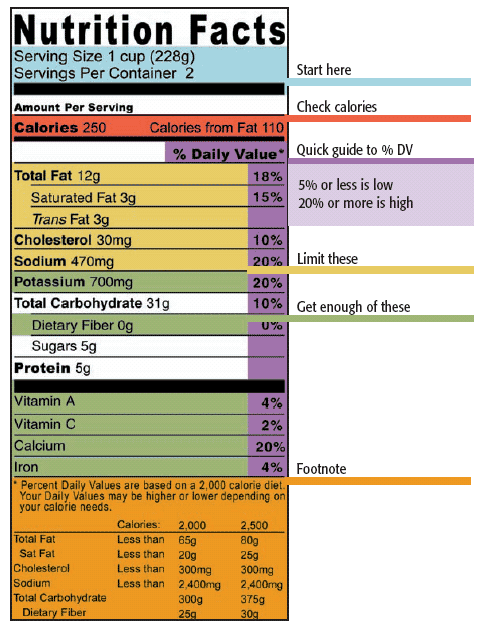






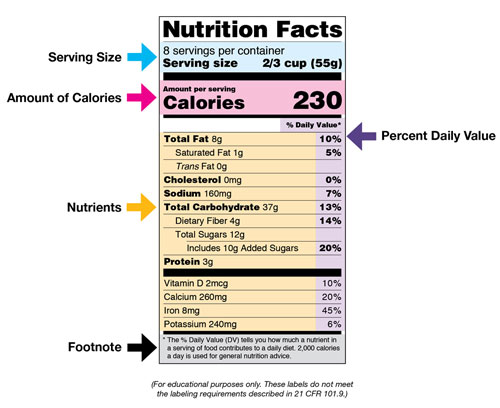


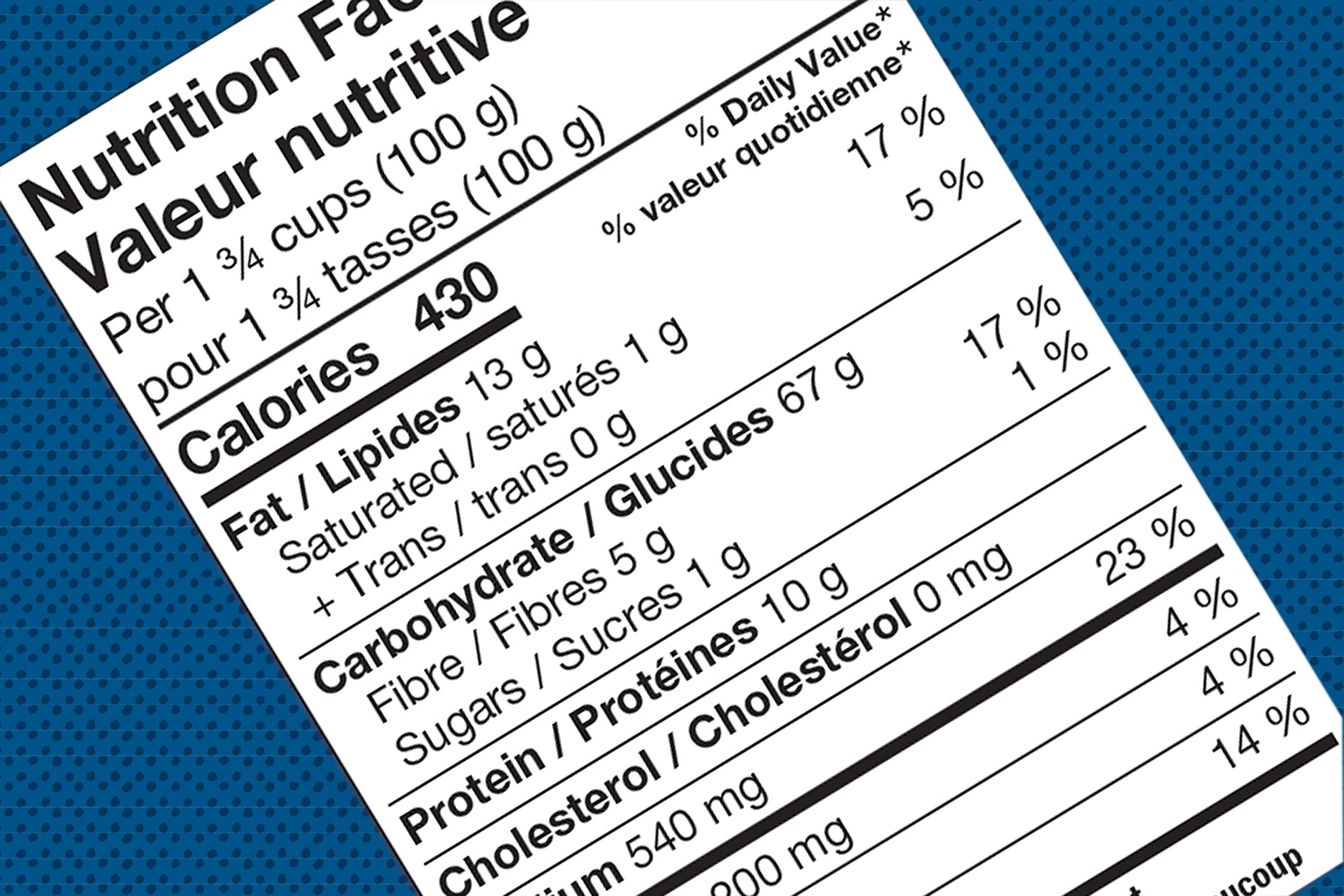

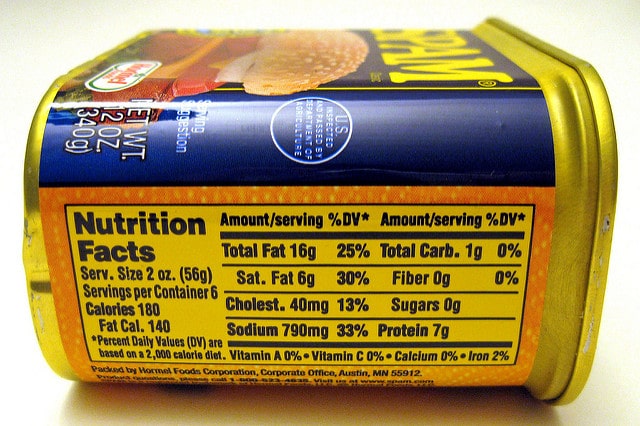



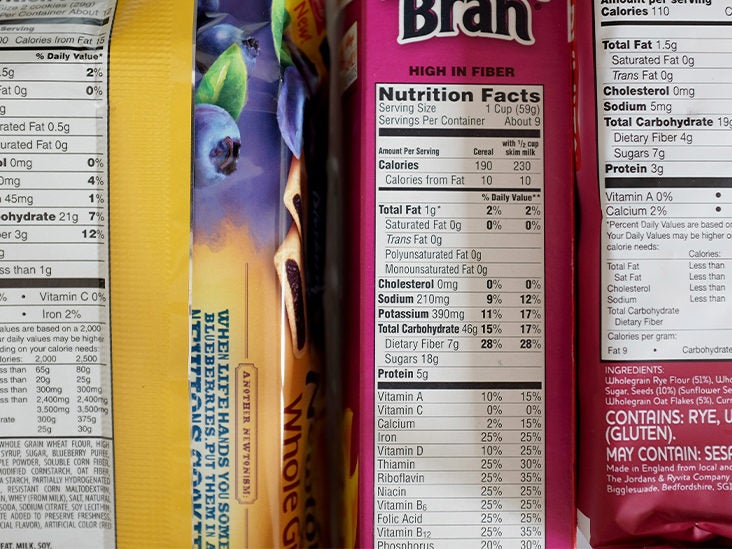



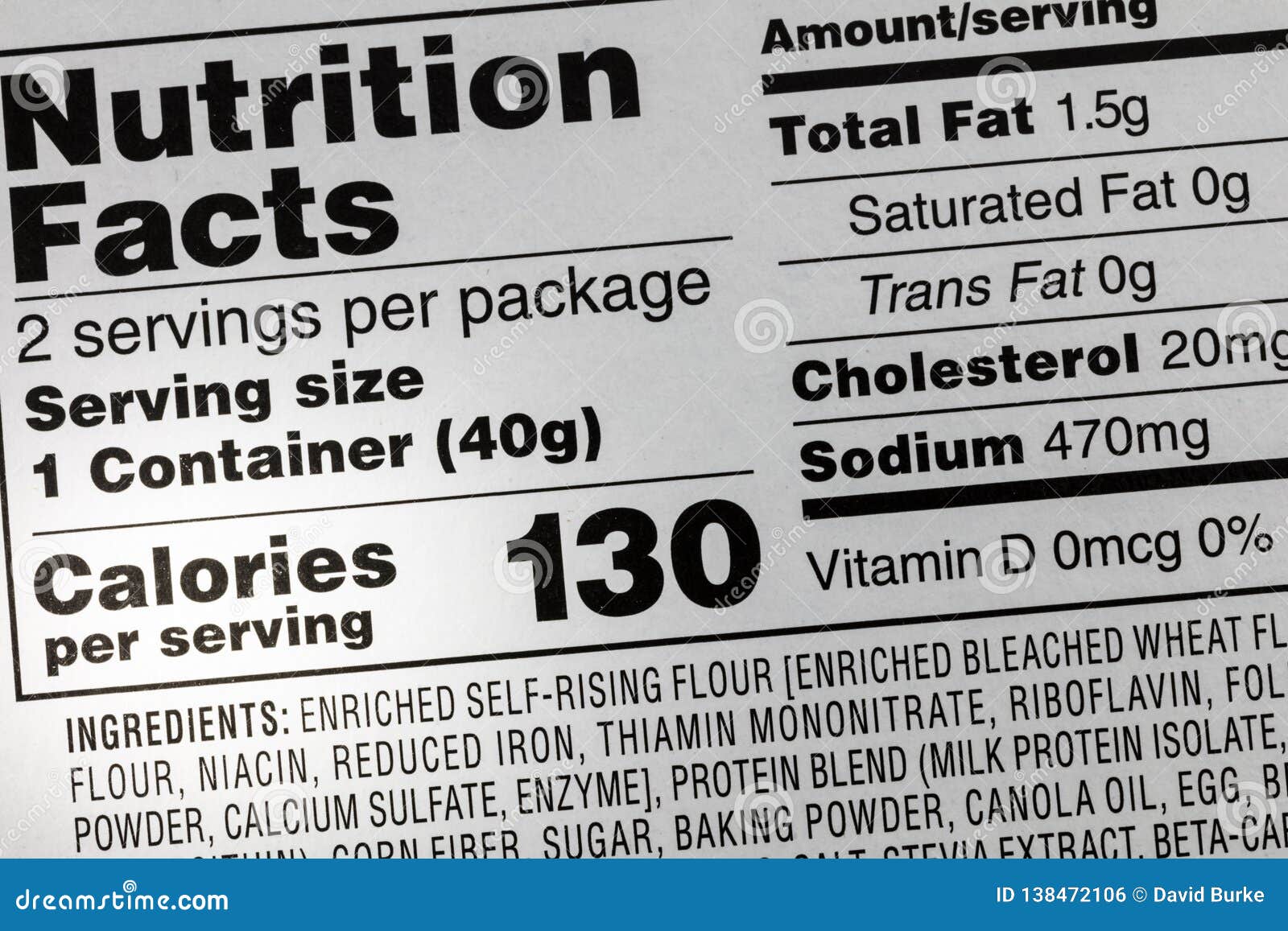
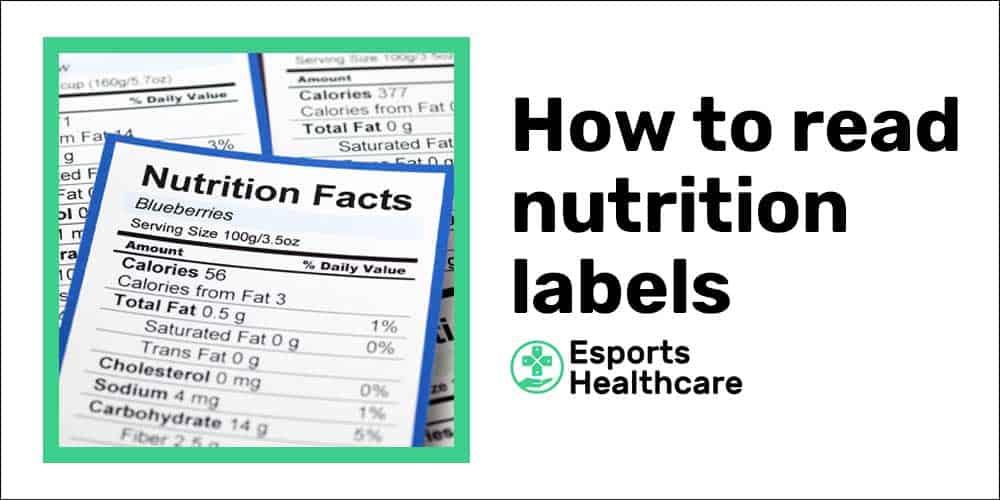


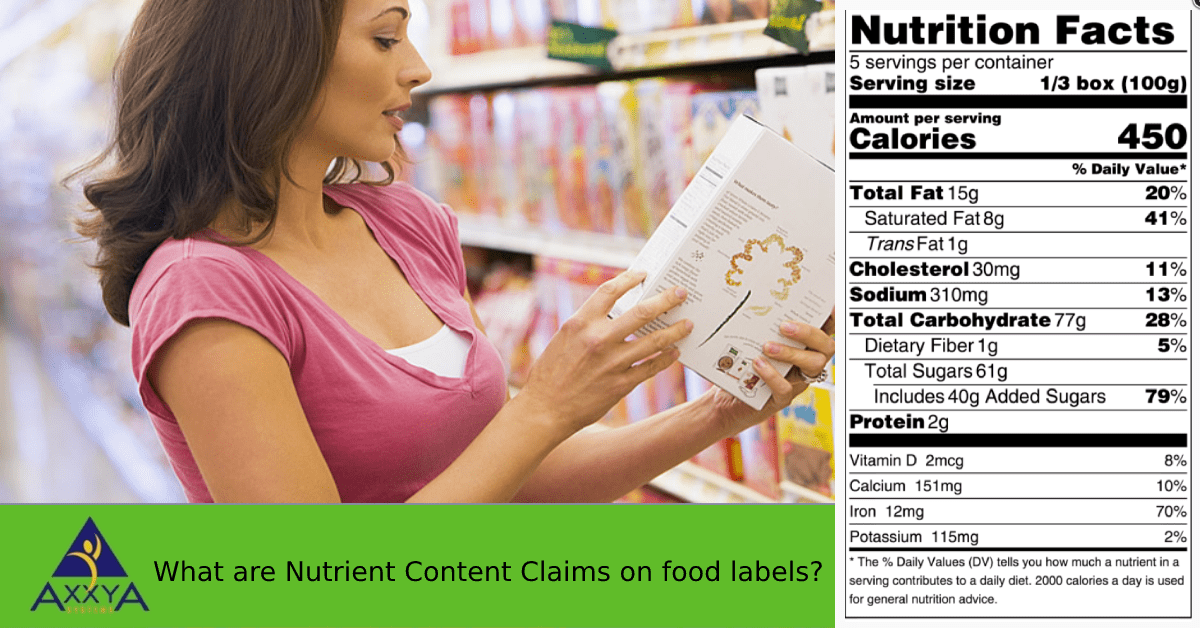









Post a Comment for "41 nutritional value on food labels"